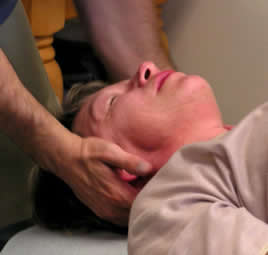Study Shows Even a Single Adjustment Helps Neck Pain
 A study published in the
September 2006 issue of the scientific journal, The Journal of Manipulative
and Physiological Therapeutics, (JMPT), showed that a single chiropractic
adjustment helps neck pain. Although most chiropractors will recommend
more than a single adjustment for their patients, this study was designed to see
if one adjustment only could have an immediate effect on neck pain. A study published in the
September 2006 issue of the scientific journal, The Journal of Manipulative
and Physiological Therapeutics, (JMPT), showed that a single chiropractic
adjustment helps neck pain. Although most chiropractors will recommend
more than a single adjustment for their patients, this study was designed to see
if one adjustment only could have an immediate effect on neck pain.
In this study 70 patients
with neck pain were tested using standardized tests for neck range of motion
and pain. These subjects were randomly separated into two groups.
One group then received a chiropractic adjustment which the study defined as
a "high-velocity low-amplitude (HVLA) manipulation." While the other
group received a "control mobilization procedure." The subjects in
both of these groups were then re-tested 5 minutes after the procedure for
range of motion and pain.
The results showed that both
groups experienced improvements in both range of motion and pain when
comparing the pre and post testing. However, the researchers
discovered that those subjects that received the chiropractic adjustment (HVLA)
had far superior results than the group that had just mobilization.
Researchers also noted that it did not matter if the subject was male or
female. Essentially, the group that had the chiropractic adjustment
had less pain and a better range of motion when tested 5 minutes after the
procedure was performed.
This study intentionally did
not look at the long term effects of just a single adjustment. Most
chiropractors believe that a series of adjustments are needed to create a
lasting change in the spine and nervous system. However, this study
does confirm that even a single specific adjustment does create an immediate
positive change. This study also points out that a chiropractic
adjustment is much more effective than random mobilization, such as was
received by the control group in this study.
The researchers stated in
their conclusion, "A single cervical high velocity-low amplitude
manipulation was more effective in reducing neck pain at rest and in
increasing active cervical range of motion than a control mobilization
procedure in subjects suffering from mechanical neck pain." |
 Home
Search This Site
Chiropractic Articles
Home
Search This Site
Chiropractic Articles
 Home
Search This Site
Chiropractic Articles
Home
Search This Site
Chiropractic Articles